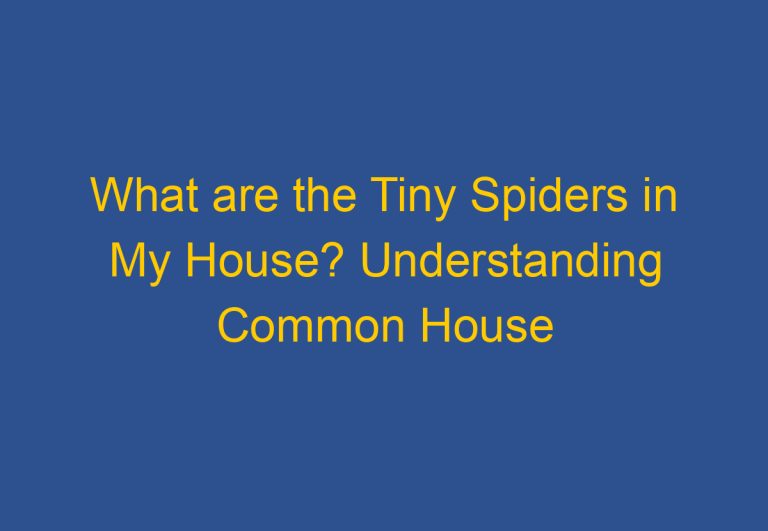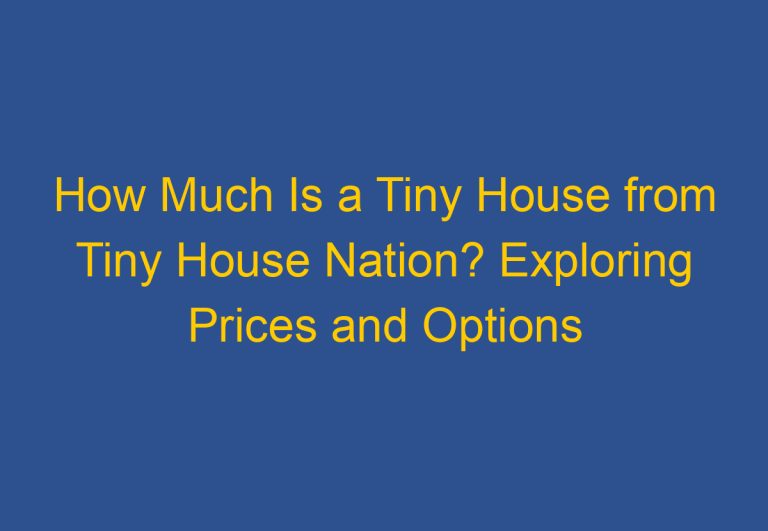8 Affordable Tiny Modular Homes Under $50K
Tiny modular homes are becoming a popular choice for people looking to live simply and sustainably.
These homes, usually under 500 square feet, can be built quickly and are often more affordable than traditional houses.
Pre-fabricated in factories, tiny modular homes offer a variety of styles and features that can be customized according to individual needs.
Whether used as a guest house, office, or a full-time residence, these homes emphasize minimalism and efficiency.

With many options available for less than $50,000, there is something for everyone. These homes not only provide a cost-effective living solution but also promote a lifestyle that reduces one’s environmental footprint. By focusing on the essentials, tiny modular homes encourage a simpler, more mindful way of living.
Key Takeaways
- Tiny modular homes are cost-effective and customizable.
- They promote a sustainable lifestyle with lower energy use.
- These homes can last for decades with proper care.
What Is a Tiny Modular Home?

A tiny modular home is a small, pre-fabricated structure designed for compact living, typically under 500 square feet. These homes are built in factories and consist of sections, or modules, that are transported and assembled on-site. This process allows for efficient construction, customization, and quality control.
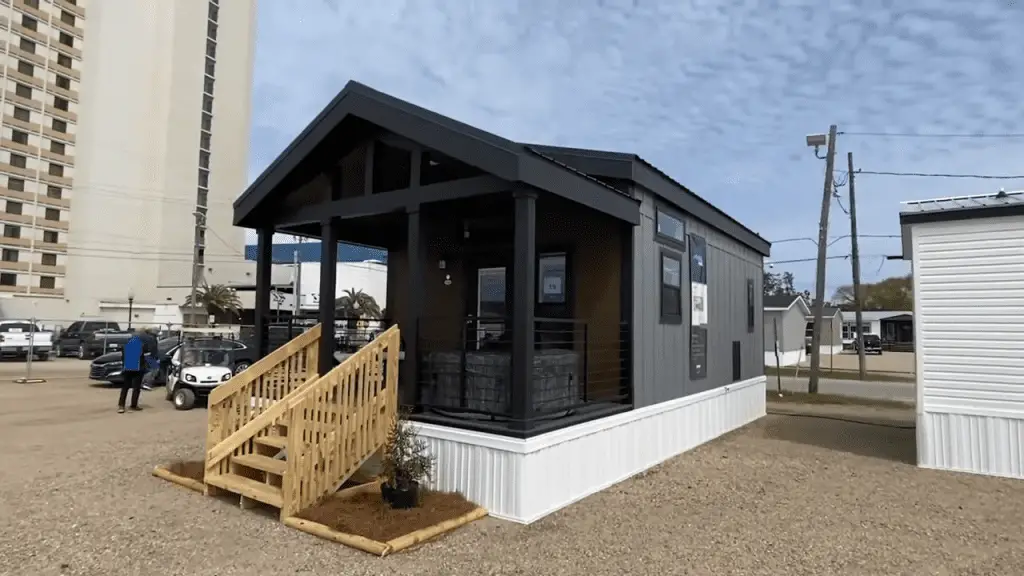
Here are some examples of tiny modular homes available for under $50,000:
Voss by Bunky Company

Size: 106 sq ft
Features: Studio office or guest room with a kitchenette and optional bathroom
Price: $28,900
Model 106 by Oxbox Inc
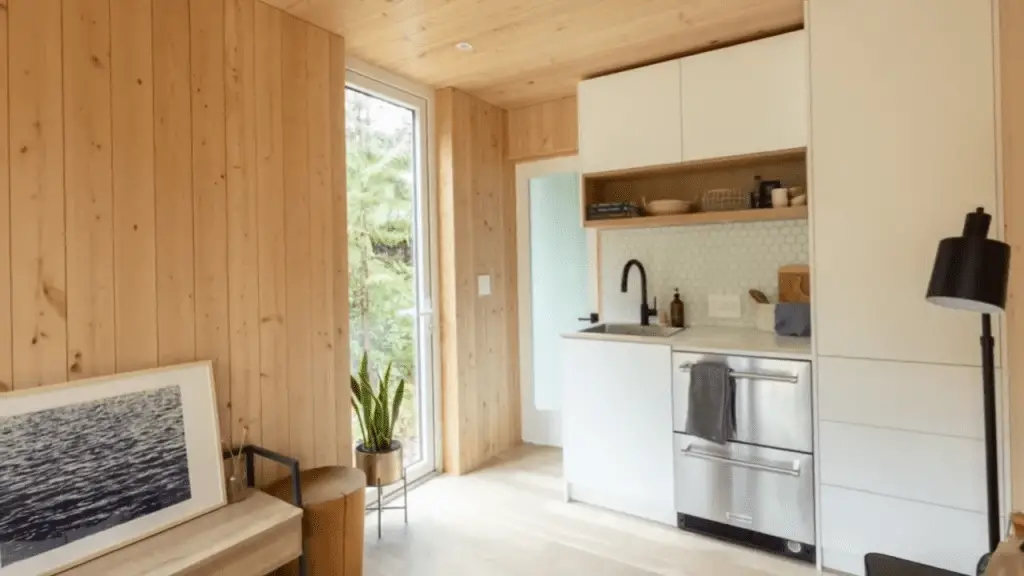
Size: Open floor plan with large windows
Features: Includes pre-assembled panels, electrical wiring, and insulation
Price: $36,900
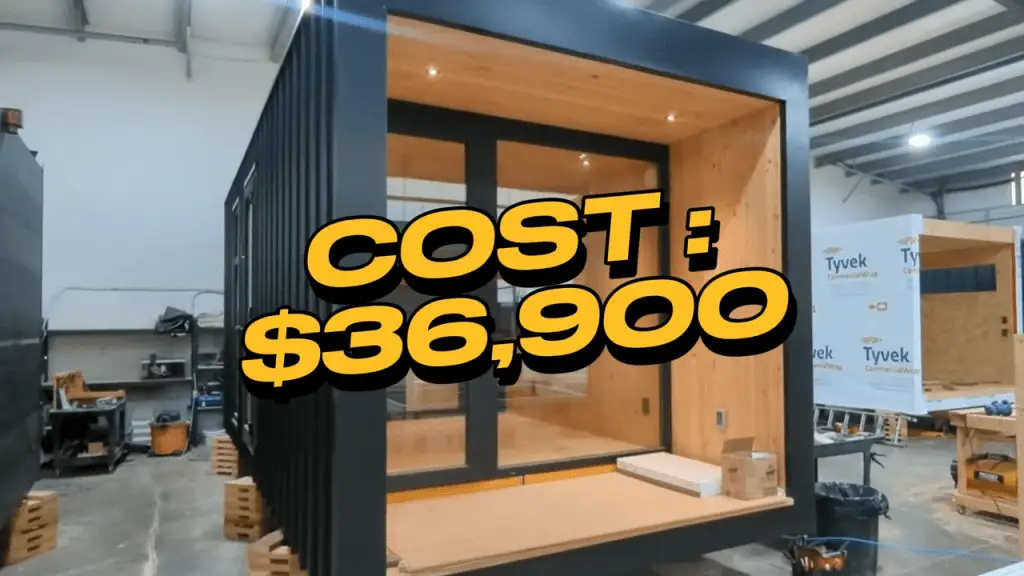
12 by Modern Shed
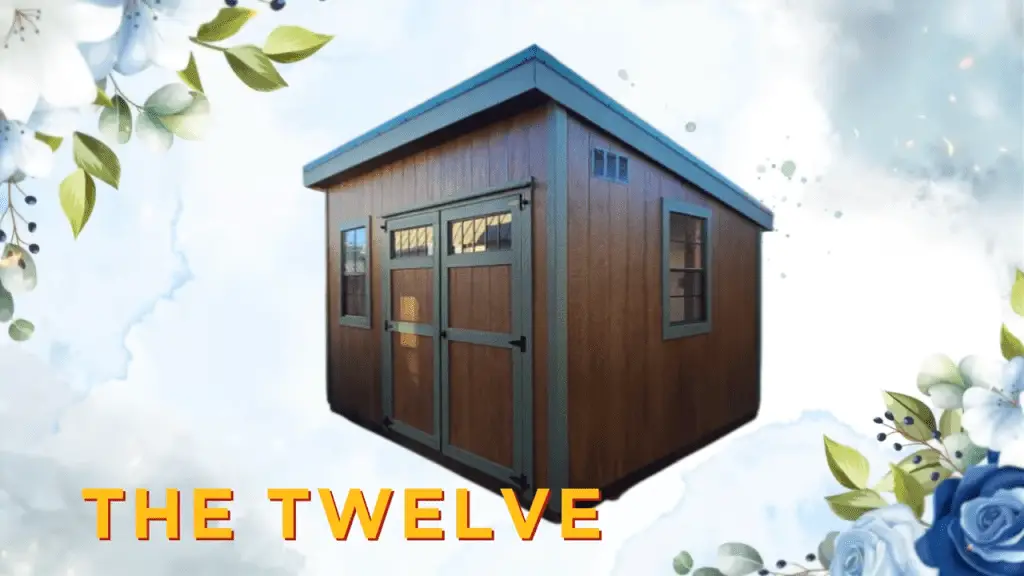
Size: 96 sq ft
Features: Office or studio with sliding glass doors
Price: $26,000
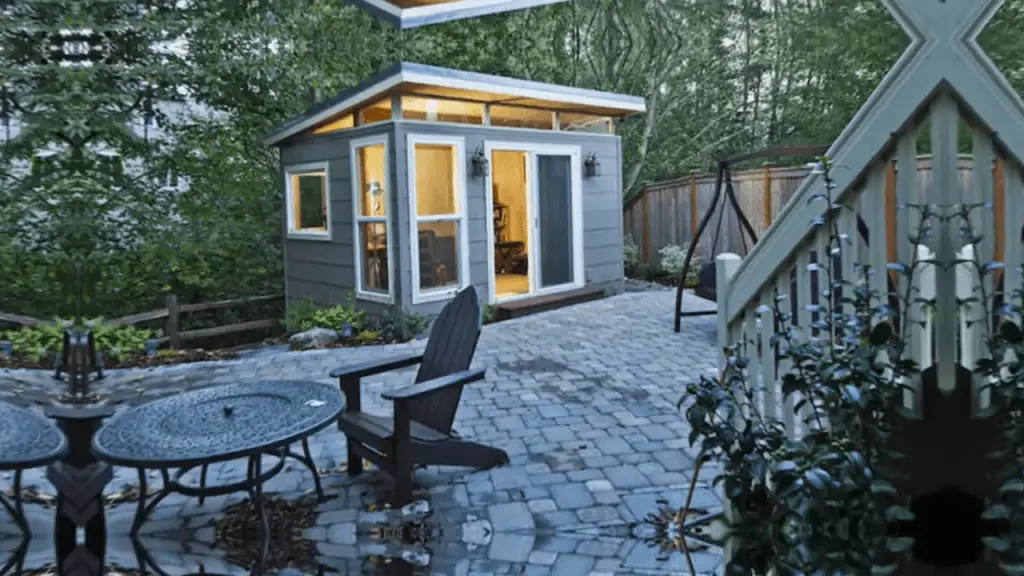

Dropbox N240 by Intenta Design

Size: 172 sq ft
Features: Studio office with a kitchenette and bathroom
Price: $30,000
Austin by Hia Living

Size: 160 sq ft
Features: Tiny home with a living area and loft bedroom
Price: $49,000
Olive by Tiny Pacific Homes

Size: 240 sq ft
Features: Tiny home with all necessary amenities
Price: $49,900
Maple by Countrywide Barns
Size: 240 sq ft
Features: Similar to the Olive with ample living space
Price: $48,900
Cassita by Boxable
Size: 375 sq ft
Features: Fully furnished studio with appliances
Price: $69,900
Some benefits of tiny modular homes include:
- Affordability: Typically less expensive than traditional homes, offering savings on land and utilities.
- Mobility: Some tiny modular homes can be moved easily, allowing for lifestyle changes without permanent relocation.
- Sustainability: Designed to use less energy and resources, with options for eco-friendly additions.
- Simplicity: Encourages a minimalist lifestyle by focusing on essential features.
Tiny modular homes follow different regulations and construction methods compared to mobile homes. They are built on permanent foundations, meeting local building codes, while mobile homes are factory-built and may not adhere to the same standards. Tiny modular homes can often be financed similarly to traditional homes, making them accessible to more people.
The lifespan of these homes can vary, but well-built versions can last for decades, sometimes even longer than traditional homes.
Effectiveness and Personalization
Tiny modular homes are a clever choice for those looking to maximize comfort in small spaces, typically under 500 square feet. These homes are pre-fabricated in factories, allowing for quicker assembly and customization compared to traditional houses.
Key Benefits
- Affordability: Tiny modular homes can be less costly than traditional homes, leading to savings in land, maintenance, utilities, and insurance.
- Mobility: Many tiny modular homes can be moved easily, making it simple to change locations as needed.
- Eco-Friendliness: These homes use fewer resources for energy and water, reducing environmental impact. Features like solar panels and composting toilets can enhance sustainability.
Comparisons to Mobile Homes
Tiny modular homes differ from mobile homes in several ways:
- Foundation: Tiny modular homes sit on a permanent foundation, offering more stability. Mobile homes are built on a chassis that allows them to be moved.
- Construction: Modular homes are assembled in sections, allowing for more customization. Mobile homes are made in one piece and have a more uniform design.
- Regulations: Tiny modular homes must follow local building codes, ensuring safety and reliability, while mobile homes only need to comply with federal standards.
The longevity of tiny modular homes can surpass that of traditional homes. Well-built models may last 30 to 55 years or even longer with proper care.
With various affordable options available, tiny modular homes are an excellent solution for comfortable, sustainable living.
Advantages of Tiny Modular Homes
Voss by The Bunky Company
The Voss is a 106 square foot modular space ideal for a studio, office, or guest room. It includes a kitchenette and optional bathroom, along with a sofa bed. This model costs $28,900 and can be assembled in just one day using basic tools.
Model 106 by Oxbox Inc
The Model 106 offers an open floor plan with large windows and skylights. It comes with pre-assembled wall, roof, and floor panels, plus electrical wiring and insulation. This model is priced at $36,900 and can also be put together in one day.
12x Modern Shed
Measuring 96 square feet, the 12x Modern Shed can serve as an office, studio, or guest room. It features sliding glass doors and large windows. The cost is $26,000, and assembly can be completed in a single day with basic tools.
DropBox N240 by InTenta Design
The DropBox N240 is a 172 square foot module that can function as a studio, office, or guest space. It includes a kitchenette, bathroom, and sofa bed. This model costs $30,000 and can be installed on-site in one day.
Austin by hiÁ Living
The Austin is a 160 square foot home suitable for use as a tiny house, guest house, or office. It features a kitchen, bathroom, living area, and loft bedroom. The price for this model is $49,000, and it can be assembled in one day.
Olive by Tiny Pacific Homes
The Olive model is 240 square feet and works great as a tiny home, guest house, or office. It includes a kitchen, bathroom, living area, and loft bedroom. This unit costs $49,900 and can be put together in one day.
Maple by Countrywide Barns
The Maple is another 240 square foot option that can be used as a tiny home or office. It comes with a kitchen, bathroom, living area, and loft bedroom. The cost is $48,900, and it can be assembled with basic tools in a single day.
Cassita by Boxable
The Cassita by Boxable is a larger studio model at 375 square feet. It features a kitchen, bathroom, living area, and bedroom space. Fully furnished, this model costs $69,900 and can be delivered and installed in just one day.
Mobility and Sustainability
Tiny modular homes offer a unique solution for those wishing to live simply while maintaining a minimal impact on the environment. These pre-fabricated buildings can be assembled on-site and often include energy-efficient features.
Benefits of Tiny Modular Homes:
- Affordability: These homes are generally less expensive than traditional homes. Owners save on land costs, insurance, maintenance, and utilities.
- Mobility: Some tiny modular homes are designed to be transported. This allows owners the freedom to relocate easily whenever they wish.
- Sustainability: Living in a tiny modular home promotes reduced energy, water, and material use. Homeowners can incorporate eco-friendly features like solar panels and composting toilets to further minimize their ecological footprint.
Comparing Tiny Modular Homes and Mobile Homes:
- Foundation:
- Tiny modular homes are placed on a permanent foundation.
- Mobile homes are built on a movable chassis.
- Construction:
- Tiny modular homes are assembled from sections at the location.
- Mobile homes are built in one piece and shipped.
- Regulations:
- Tiny modular homes must meet local building codes.
- Mobile homes are only required to follow federal standards.
- Financing:
- Tiny modular homes can qualify for traditional mortgages.
- Mobile homes usually do not qualify for the same financing options.
Many people find tiny modular homes to be durable, with some lasting several decades when well-maintained. This option provides a practical and sustainable housing choice for those looking to simplify their lives.
Simple Living
Living in a tiny modular home can lead to a more simplified lifestyle. These homes offer everything necessary while eliminating unnecessary items. This helps declutter both the living space and the mind.
Affordable Choices
Tiny modular homes are often more affordable than traditional houses. This includes not only the purchase price but also savings on land, insurance, maintenance, and utility costs. Below are some budget-friendly options:
- Voss by the Bunky Company: 106 sq ft, $28,900
- Model 106 by Oxbox Inc: 106 sq ft, $36,900
- 12 by Modern Shed: 96 sq ft, $26,000
- Dropbox N240 by Intent Design: 172 sq ft, $30,000
- Austin by Hia Living: 160 sq ft, $49,000
Mobility and Sustainability
Tiny modular homes provide mobility. If the homeowner wants to change locations, they can move these homes if they are built on wheels. Living in these units also promotes sustainability. They generally use fewer resources and can be equipped with eco-friendly features such as solar panels or composting toilets.
Differences from Mobile Homes
It is important to note the differences between tiny modular homes and mobile homes:
- Foundation: Tiny modular homes are placed on permanent foundations, making them more stable. Mobile homes are on a movable chassis.
- Construction: Modular homes are assembled on-site from factory-built sections, while mobile homes are shipped as a single unit.
- Regulations: Modular homes need to follow local building codes; mobile homes must meet federal standards.
- Financing: Modular homes can qualify for traditional mortgages, unlike mobile homes.
These factors contribute to the longevity of tiny modular homes. Well-built modular homes can last decades and may even exceed the lifespan of traditional houses.
Tiny Modular Homes vs. Mobile Homes
Tiny modular homes and mobile homes are both types of prefabricated housing, yet they have important differences.
Foundation
- Tiny Modular Homes: These homes sit on a permanent foundation, which provides stability and durability.
- Mobile Homes: They are built on a movable chassis, making them more flexible and easier to transport.
Construction
- Tiny Modular Homes: Built in sections or modules, these homes are assembled on-site. This allows for more customization and a variety of designs.
- Mobile Homes: Constructed entirely in a factory and transported as a single unit, leading to a more standardized layout.
Regulations
- Tiny Modular Homes: Must comply with local and state building codes, which makes them safer and more reliable.
- Mobile Homes: Follow federal standards, which can make them more accessible and affordable, but less regulated.
Financing
- Tiny Modular Homes: Can qualify for traditional mortgages, making them easier to finance.
- Mobile Homes: Often do not qualify for traditional loans, making ownership more complicated.
By understanding these differences, buyers can make informed decisions about which type of home best suits their needs and lifestyle.
Funding and Ownership
Tiny modular homes offer an affordable alternative to traditional housing. These homes typically cost less and lead to savings on land, insurance, utilities, and maintenance. With prices often under $50,000, they provide an attractive option for those looking to simplify their living situation.
Financing Options
Tiny modular homes can qualify for traditional mortgages, making them easier to finance than mobile homes. This feature can help potential buyers secure ownership more straightforwardly.
Benefits of Tiny Modular Homes
- Affordability: Lower costs compared to standard houses.
- Mobility: Some models can be relocated, offering flexibility.
- Sustainability: Built to consume less energy and resources, they can include eco-friendly features like solar panels.
- Simplicity: Designed to offer essential living space, these homes help reduce clutter and focus on what truly matters.
Lifespan and Durability
With proper construction and maintenance, tiny modular homes can last decades. They are often built to withstand various conditions and can be a long-lasting housing solution.
Lifespan and Durability
Tiny modular homes are designed to be long-lasting and resilient. Their lifespan depends on several factors, including the quality of materials, the type of foundation, how often they are moved, and the local climate.
Well-built tiny modular homes can last for many years. Here are some general lifespan estimates:
- High-quality modular homes: Approximately 30 to 55 years
- Some sources: Suggest they can last even decades longer
It’s worth noting that tiny modular homes are typically constructed to withstand various conditions. This durability makes them a viable choice for those seeking sustainable and stable living options.
Final Thoughts and Next Steps
Tiny modular homes offer a unique blend of charm, comfort, and affordability. They are perfect for anyone wanting to live more simply and sustainably. Here are some reasons to consider them:
- Affordability: Prices for many models start under $50,000, making them a budget-friendly choice.
- Mobility: For those who like to move or travel, these homes can often be relocated easily.
- Sustainability: Designed to minimize energy and resource use, these homes can incorporate eco-friendly features like solar panels and rainwater systems.
- Simplicity: Living in a tiny home encourages focusing on what truly matters, leading to less clutter and a more organized life.
When comparing tiny modular homes to mobile homes, remember these key differences:
| Feature | Tiny Modular Homes | Mobile Homes |
|---|---|---|
| Foundation | Permanent foundation | Movable chassis |
| Construction | Built in sections on-site | Built entirely at factory |
| Regulations | Must meet local building codes | Only needs to meet federal standards |
| Financing | Qualify for traditional mortgages | Often harder to finance |
Numerous appealing models are available; each with its own unique features and price points.
Interested? Share your thoughts and questions in the comments below. If you enjoyed this information, consider subscribing for more insights into compact living. A simple click can keep you updated on future videos!

